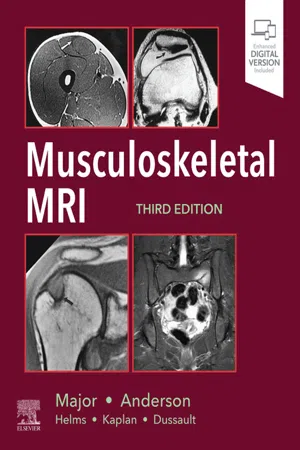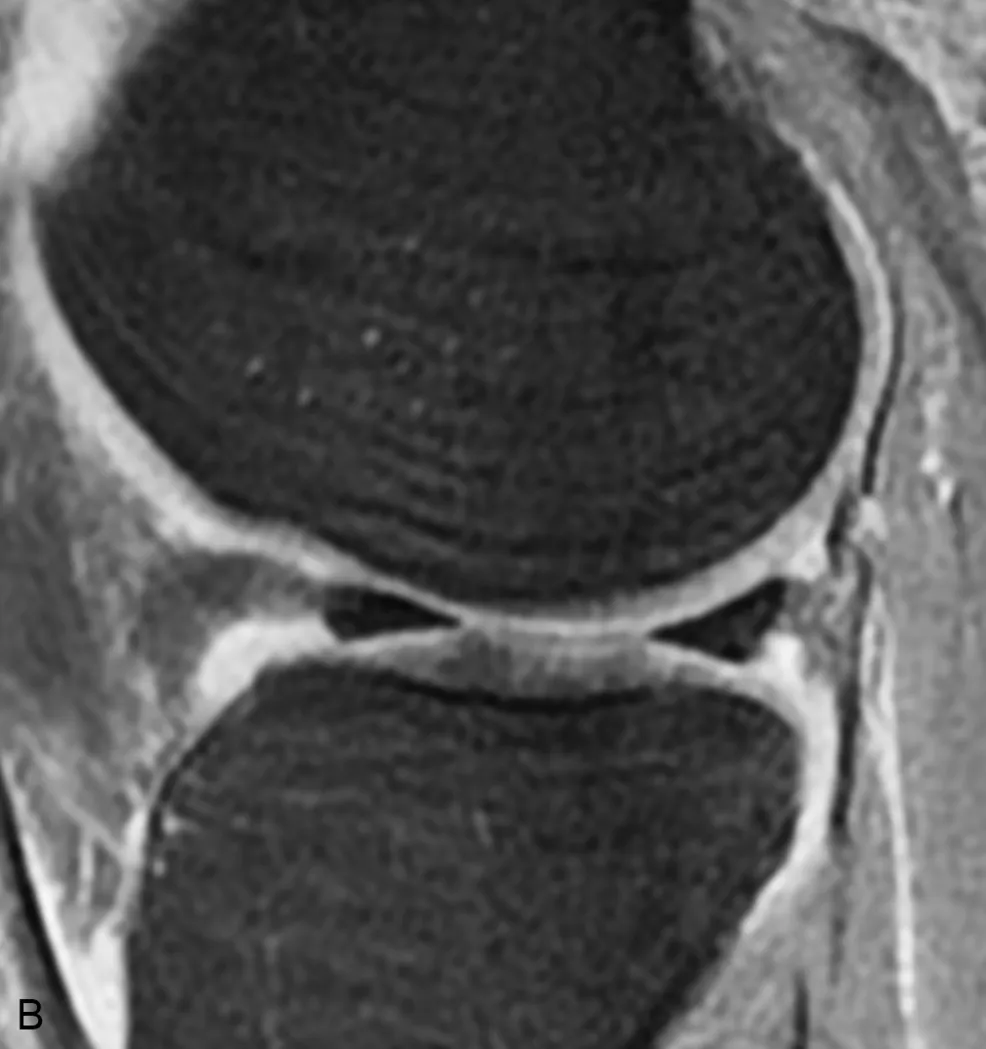
- 480 pages
- English
- ePUB (mobile friendly)
- Available on iOS & Android
Musculoskeletal MRI E-Book
About this book
Ideal for residents, practicing radiologists, and fellows alike, this updated reference offers easy-to-understand guidance on how to approach musculoskeletal MRI and recognize abnormalities. Concise, to-the-point text covers MRI for the entire musculoskeletal system, presented in a highly templated format. Thoroughly revised and enhanced with full-color artwork throughout, this resource provides just the information you need to perform and interpret quality musculoskeletal MRI.- Includes the latest protocols, practical advice, tips, and pearls for diagnosing conditions impacting the temporomandibular joint, shoulder, elbow, wrist/hand, spine, hips and pelvis, knee, and foot and ankle.- Follows a quick-reference format throughout, beginning with basic technical information on how to obtain a quality examination, followed by a discussion of the normal appearance and the abnormal appearance for each small unit that composes a joint.- Depicts both normal and abnormal anatomy, as well as disease progression, through more than 600 detailed, high-quality images, most of which are new to this edition.- Features key information boxes throughout for a quick review of pertinent material.
Frequently asked questions
- Essential is ideal for learners and professionals who enjoy exploring a wide range of subjects. Access the Essential Library with 800,000+ trusted titles and best-sellers across business, personal growth, and the humanities. Includes unlimited reading time and Standard Read Aloud voice.
- Complete: Perfect for advanced learners and researchers needing full, unrestricted access. Unlock 1.4M+ books across hundreds of subjects, including academic and specialized titles. The Complete Plan also includes advanced features like Premium Read Aloud and Research Assistant.
Please note we cannot support devices running on iOS 13 and Android 7 or earlier. Learn more about using the app.
Information
Basic Principles of Musculoskeletal MRI
What Makes a Good Image?
Lack of Motion


A, Sagittal proton density–weighted image of the knee. There is marked motion artifact and linear increased signal suggestive of a tear in the anterior horn of the lateral meniscus (arrowhead). B, Sagittal proton density with fat saturation is also degraded by motion artifacts but confirms that the meniscus is intact and that the meniscal signal abnormality was secondary to motion artifact.
Signal and Resolution (Table 1.1)
| ↑ Signal/↓ Resolution | ↑ Resolution/↓ Signal |
|---|---|
| ↑ Slice thickness | ↓ Slice thickness |
| ↑ Field of view | ↓ Field of view |
| ↓ Imaging matrix | ↑ Imaging matrix |


A, Axial T1-weighted image of the thumb obtained with a phased array extremity coil is of very poor quality, primarily related to prominent image noise. B, A follow-up axial T1-weighted image at the same level obtained with a dedicated wrist coil demonstrates markedly improved image quality due to an improved signal-to-noise ratio.
Table of contents
- Cover image
- Title page
- Table of Contents
- Copyright
- Dedication
- Preface
- 1: Basic Principles of Musculoskeletal MRI
- 2: Marrow
- 3: Tendons and Muscles
- 4: Peripheral Nerves
- 5: Musculoskeletal Infections
- 6: Arthritis and Cartilage
- 7: Tumors
- 8: Osseous Trauma
- 9: Temporomandibular Joint
- 10: Shoulder
- 11: Elbow
- 12: Wrist and Hand
- 13: Spine
- 14: Hips and Pelvis
- 15: Knee
- 16: Foot and Ankle
- Index